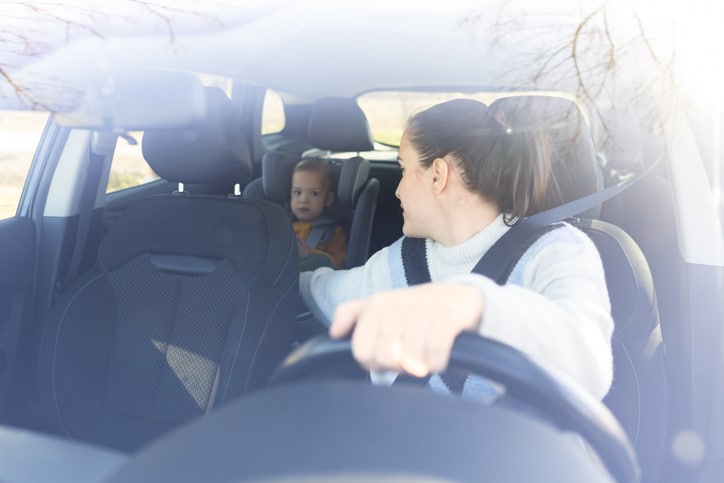There’s that moment in every TV show or movie with an interior car scene: the driver looks the passenger in the eye and carries on a long conversation while your mind screams, “Watch where you’re going!” We’re right to be worried. Distracted driving is a serious issue. Five seconds at 55 mph is like driving the length of an entire football field. Imagine doing that with your eyes closed.
While no longer the top cause of distracted driving, thanks to mobile devices and eating, passengers are still a major cause of vehicle crashes. From the moment they enter your vehicle, your focus is directed to them. You ask, “How are you?” “Seat belts fastened?” “What’s been going on since the last time I saw you?” It’s natural to want to catch up.
Children and pets are even more attention-grabbing. Whether you’re keeping kids entertained or quiet, settling arguments, or trying to calm crying, it all pulls your concentration from the task at hand: driving. A loose pet can not only divert your attention but can also interfere with your ability to brake or steer.
For younger drivers, passengers are even more dangerous. In a study reviewed by the NHTSA, teen drivers were two-and-a-half times more likely to engage in risky behaviors when driving with just one teenage passenger vs. driving alone. The more teens in the car, the higher the risk of a fatal crash. That risk goes up in direct relation to the number of teenagers in the car.
That’s the reason states restrict the number and types of passengers a beginner driver is allowed to carry. Yes, sometimes it can be safer to have a second person in the car. You can charge them with directions so you can pay attention to the other vehicles. On long trips, a passenger can help you focus and stay alert.
You can’t avoid carrying passengers. Promise yourself that you won’t let them keep you from giving your full attention to the road. Ask your passengers to remind you to focus on the road and agree to talk only when necessary and to avoid arguments!
If you must deal with children, pull over. Teach them early that driving is your most important job and plan ahead with distractions of their own, games, books, or toys that keep them busy.
Make sure your pet is properly secured in a pet carrier or pet harness before you turn your key. This not only cuts back on distractions to you, but it will help keep them safe in case of an accident. Keep your fur babies safe on road trips with tips from American Humane.
As a parent to teens set driving ground rules with your new driver. Stick to your state laws no matter how long — or short — the trip is.
Passengers, you have responsibilities, too. Limit your conversation; it can wait until you arrive at your destination. Don’t be afraid to speak up if the driver isn’t paying full attention to the road.
Drivers and passengers working together can help reduce distracted driving, making the roads safer for all of us!


